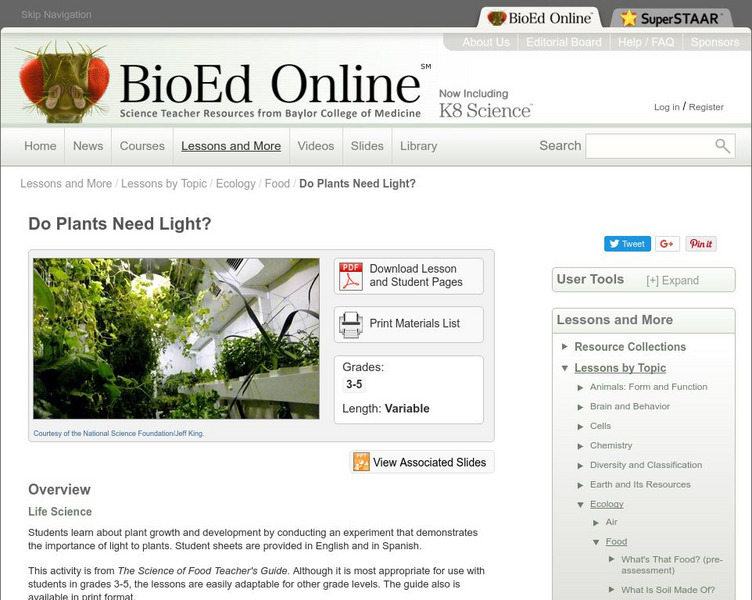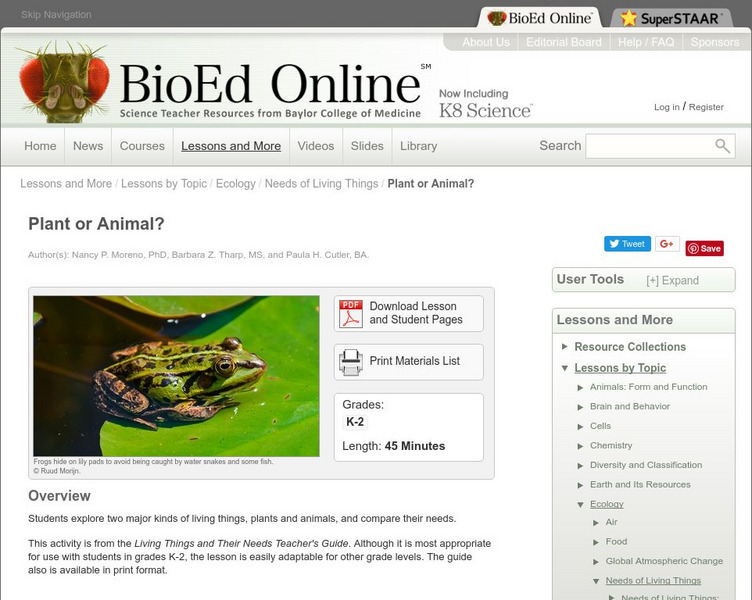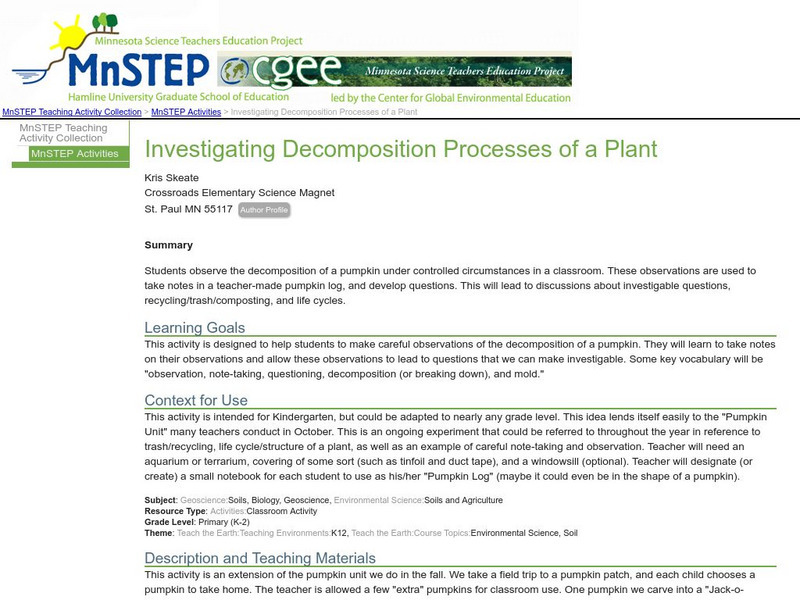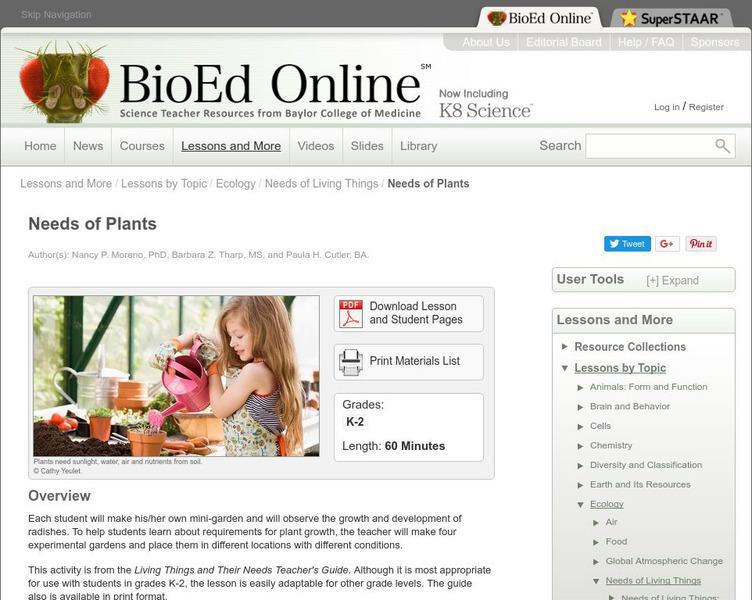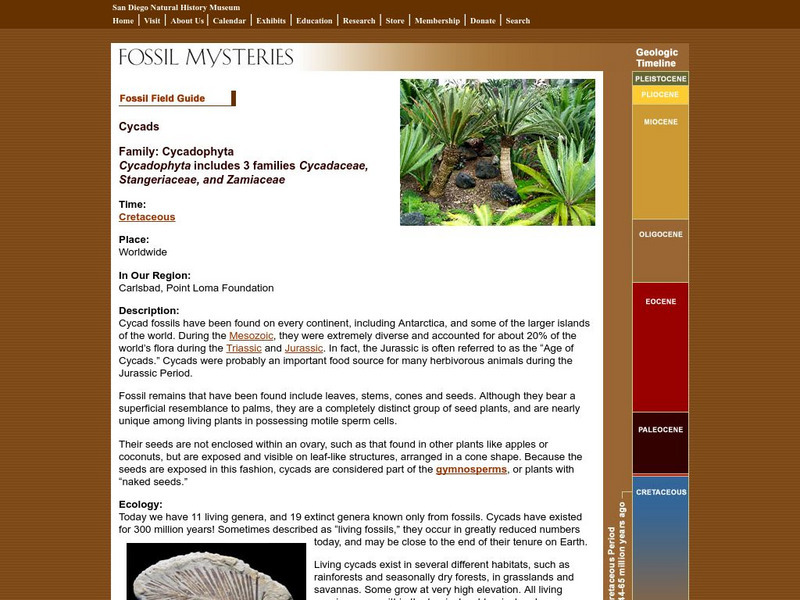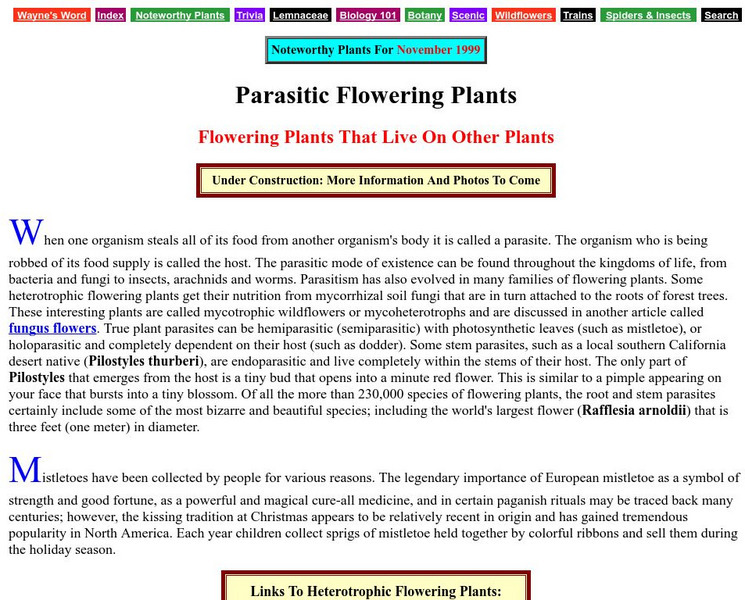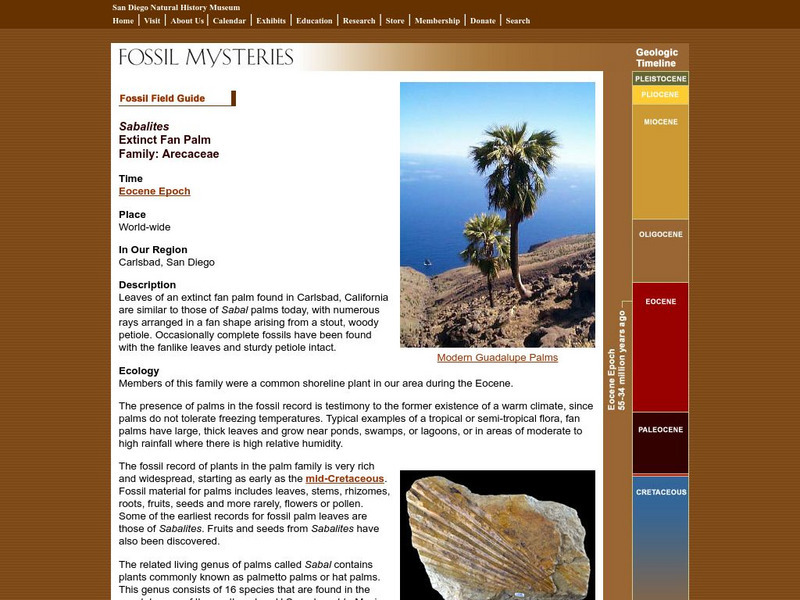Cornell Lab of Ornithology
Habitat Network: Increase Canopy Cover by Planting and Maintaining Trees
Find out the ecological benefits of filling a backyard habitat with trees.
Science Education Resource Center at Carleton College
Serc: Plant Succession Field Investigation
This lesson is to be used as an introduction to ecosystems and plant succession. Students will observe both biotic and abiotic features of a selected site on a plot of wild land. They will take notes, make drawings, and collect samples...
Curated OER
National Park Service: Alien Plant Invaders of Natural Areas
A virtual who's who of invasive plants, herbs, vines, shrubs, and trees. This comprehensive site provides easy-to-read fact sheets that contain native ranges, plant descriptions, ecological threats, U.S. distributions & habitats,...
Science Education Resource Center at Carleton College
Serc: Investigating the Ecology of Goldenrod Galls Through Biological Sampling
In this biology field lab exercise, students conduct a stationary population study of goldenrod galls. They examine a host of factors including goldenrod plant density, goldenrod gall density, gall height, gall mass, larval exit hole...
BioEd Online
Bio Ed Online: Do Plants Need Light?
Plants need air, water, soil, and light to grow. Students learn about plant growth and development by conducting an experiment that demonstrates the importance of light to plants.
Polk Brothers Foundation Center for Urban Education at DePaul University
De Paul University: Center for Urban Education: Prairie Ecology [Pdf]
"Prairie Ecology" is a one page, nonfiction passage about the tallgrass prairie ecosystem and how it works using three animals: the skipper butterfly, ground squirrel, and the bison It is followed by an open-ended question which requires...
CK-12 Foundation
Ck 12: Biology: Bird Ecology
[Free Registration/Login may be required to access all resource tools.] Discusses the diversity of bird habitats and food sources.
Cornell Lab of Ornithology
Habitat Network: Ecological, Practical, Aesthetic Advantages of Wild Shorelines
Habitat Network examines what we know about the ecological functioning of shorelines, and makes recommendations for design, planting, and management of these specialized zones.
BioEd Online
Bio Ed Online: Living Things and Their Needs: Plant or Animal?
In this lesson plan, learners investigate and compare the needs of plants and animals. The lesson plan can be downloaded in PDF format.
Science Education Resource Center at Carleton College
Serc: Using Plant Surveys to Study Biodiversity
An extended field investigation intended as launch into several concepts in environmental science including biodiversity, human impacts on natural systems, and energy transfer in ecosystems.
Science Education Resource Center at Carleton College
Serc: Investigating Decomposition Processes of a Plant
Students observe the decomposition of a pumpkin under controlled circumstances in a classroom. This can be used to lead discussions on recycling, trash, composting, or life cycles.
BioEd Online
Bio Ed Online: Needs of Plants
Each student will make his/her own mini-garden and will observe the growth and development of radishes. To help students learn about requirements for plant growth, the teacher will make four experimental gardens and place them in...
Other
Ny Botanical Garden: Fungal and Plant Diversity
Findings of an expedition by the New York Botanical Garden in French Guiana to investigate vegetation.
Canadian Museum of Nature
Canadian Museum of Nature: Native Plant Gardening
Plants native to Canada that would do well in small, ecologically friendly gardens are presented here. There are several plants each for ponds, meadows and woodlands. Each plant has a popup window with facts about it.
Other
Maine: The Lakes Environmental Association
The site offers several areas of interest to those promoting ecological awareness and education: watershed information, lake protection, loon culture and behavior, and Eurasion Watermilfoil, an "invasive aquatic plant."
University of California
Ucmp: Plantae
At this resource learners can take a look at the plant kingdom with a detailed examination of fossil records, life history and ecology, systematics, and morphology.
Environmental Education for Kids
Eek!: Activity: Trees and Air Quality
Site offers lessons and activities designed to supplement study of the environment and ecology. Concise explanations are presented on the importance of trees in our world. Also, problem solving and creative thinking is encouraged...
Ohio State University
Ohio State University: General Plant Biology: Biomes and Agriculture
An introduction to biomes and how agriculture is considered in studying large ecosystems of the world. Text is well written and easy to follow with links, charts, and pictures.
Tramline
Virtual Field Trip: Temperate Forest Biome
Travel with your students on a Virtual Field Trip to learn about Temperate Forest Biomes. You will also discover many informative and interactive websites.
Virginia Tech
Virginia Polytechnic Institute: Greenhouse Dinosaur Extinction Theory
This comprehensive page discusses the Asteroid Impact vs. Volcano-Greenhouse dinosaur extinction debate. It was written by paleontologist, professor, and scientist Dr. Dewey McLean.
San Diego Natural History Museum
San Diego Natural History Museum: Fossil Field Guide: Cycads
A look at what fossil evidence reveals about the life and ecological interactions of the extinct cycad plant.
Palomar Community College District
Palomar College: Parasitic Flowering Plants
The ecology and natural history of plants that live at the expense of other organisms is described in detail at this site from the Palomar College. Great material for a report or presentation.
San Diego Natural History Museum
San Diego Natural History Museum: Fossil Field Guide: Extinct Fan Palm
A look at fossil evidence that reveals life and ecological interactions of the extinct fan palm tree.
CK-12 Foundation
Ck 12: Life Science: Flow of Energy
[Free Registration/Login may be required to access all resource tools.] When an herbivore eats a plant, the energy in the plant tissues is used by the herbivore. Every time energy is transferred from one organism to another, there is a...




